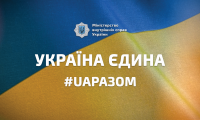
The Ukrainian revolution, which began in 1917, had already made significant achievements in early 1918. Ukraine's statehood was restored in the form of the Ukrainian People's Republic, local authorities were established, education and culture were Ukrainized, but at the same time, there were significant miscalculations in the field of building its own army and law enforcement agencies. This question was extremely relevant, as it was necessary to repel the aggression of Soviet Russia.
The government of the Ukrainian People's Republic turned to Ukrainian students for help: “The formidable time has come for our Motherland. Like a black raven, the Russian-Bolshevik horde of plunderers has besieged our Ukraine, making new raids on us almost every day, and Ukraine, cut off from everywhere, may end up in a very difficult situation." At a meeting of junior students of Kyiv University of St. Volodymyr and the Ukrainian People's University, it was approved to create a student tent of Sich Riflemen.
On January 24-27, 1918, fierce fighting broke out outside the Bakhmach station. Ukrainian troops, given the unfavorable military circumstances and their small numbers, retreated to the station Kruty. The First Ukrainian Youth (Junker) School named after B. Khmelnytsky, consisting of four hundred (400-450 cadets and 20 officers) and the first hundred (116-130 people) of the newly created volunteer Auxiliary Student Tent of the Sich Riflemen, joined by about 80 volunteers from the local Free Cossacks from Nizhyn. On the morning of January 29, 1918, an attack on the Ukrainian positions of the 4,000-strong Bolshevik detachment of the Petrograd and Moscow Red Guards began. The battle lasted until evening, several attacks were repulsed, the battle losses of the Bolsheviks amounted to 300 killed, wounded, captured. Commander Averkii Honcharenko ordered to withdraw to the echelon, which was waiting for two kilometers. Retreating, part of the student hundred was surrounded, desperately attacked, but the forces were unequal. One pair (platoon) of students at dusk lost their bearings and went to the station Kruty, already occupied by the Red Army. 27 young prisoners (students and high school students) were shot. Before the shooting, 7th-grade student Hryhorii Pipskyi from the Starosambirshchyna region was the first to start singing "Ukraine's glory, Ukraine's freedom did not disappear", and the rest of the students supported singing. The youngest died was 16 years old. The losses of Ukrainian troops near Kruty are estimated at 70-100 dead.
After the shooting, the Bolsheviks did not allow local peasants to bury the bodies of the dead. Only after the liberation of Kyiv from the Reds, by order of the Ukrainian government, on March 19, 1918, a solemn funeral of those killed in the battle of Kruty at Askold's grave took place.
At a funeral in Kyiv, Mykhailo Hrushevskyi, chairman of the Ukrainian Central Rada, called the young men who died in the unequal struggle heroes. Many poems are dedicated to their feat. Here is what the poet and publicist Roman Bzheskyi (Dazhbozhych), a direct participant in the liberation struggles of 1918–1919, wrote about this heroic and tragic event:
Went and sacrificed to the state -
All the joy of youth, love and blood.
And a strange radiance in a bloody glow
Hatred started, love shone!
In the battle of Kruty, the defenders of Ukrainian statehood, despite irreparable losses, achieved tactical military success. The enemy's offensive was stopped and an organized retreat was carried out with the destruction of tracks and bridges. The Russian-Bolshevik invaders lost combat capability for four days. The way to the capital of Ukraine, albeit for a short time, was blocked by the bodies of very young people - those who could live, love and create for a long time. However, they, taking up arms, gave up the most precious thing - their lives and died for the future of the Fatherland in an unequal battle. This feat of Kruty's heroes in our time can be compared with the feat of the defenders of Donetsk airport - "cyborgs" in 2014-2015. It is important to remember your heroes, because they are the best of the best we have lost, and are our national symbols, our flag.
Only one participant in the battle of Kruty, Matvii Danyliuk, who lived for more than 100 years (1892-1994), has survived to the present period. He waited for the restoration of Ukraine's independence in 1991, meeting it in the village of Vatyn, Volyn region.
In 2006 a monument was erected on the site of the battle near Kruty. On the occasion of the 80th anniversary of the battle (1998), the Mint issued a commemorative coin. In early 2012, on the site of a wooden cross on Askold's grave, a real monument to the Krutiantsy was erected: a "Cossack cross" made of precious stone, in the center of which is carved a trident, under which an eloquent and symbolic quote from the Holy Gospel - The greatest love is to lay down one's life for friends. " It is significant that the monument was erected not by high-ranking officials, but by ordinary citizens of Ukraine. In Kharkiv, on January 29, 2016, a mural dedicated to the heroes of the battle near Kruty appeared on a house at 1a Feierbakh Street. In 2019, the historical film "Kruty 1918" was released, dedicated to the 100th anniversary of the Battle of Kruty.
Volodymyr Hrechenko, professor of history